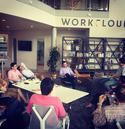Progressives praise California as the harbinger of the political future, the home of a new, enlightened, multicultural America. Missouri Senator Claire McCaskill has identified California Senator Kamala Harris as the party leader on issues of immigration and race. read more »
Economics
The Buffalo Billion Reconsidered
You may recall my City Journal feature on Buffalo from 2015. This was written about the time New York Gov. Andrew Cuomo’s Buffalo Billion program – a pledge to spend $1 billion in state funds to bring back the city economically – was in the earlier stages of development. read more »
- Login to post comments
Millennials Reinvent Localism in Their Search for Community
It’s common knowledge that millennials long for "community." What’s less understood is the concrete expression of that longing in cities and suburbs across America, especially now that the older tier of millennials between ages 28 and 34 are buying homes, starting companies, running for office, and throwing around their consumer weight. read more »
- Login to post comments
Democrats Are Helping Trump to Win Re-Election
Donald Trump and the Republican Party, increasingly his subsidiary, should be headed to a reckoning of historic proportions. But, despite his own often unforced errors, Trump may have found an unwitting ally far more impactful than Vladimir Putin: the Democratic Party. read more »
- Login to post comments
Little Experiments on the Cheap
Part of my ongoing plan to create a more resilient and adaptable life includes finding alternative ways to satisfy daily needs with simple affordable work-arounds. I want electric lights at night and I want to charge my cell phone and small devices even if the power goes out in a storm. This little $80 portable foldable solar panel does the trick. I placed my wallet next to the folded panels for scale. The package is the size of a book. read more »
- Login to post comments
Self-Fulfilling Prophecy
Urban planners predicted that Millennials would prefer renting apartments in dense cities over owning homes in low-density suburbs. So they told regional governments to restrict low-density development and promote high-density housing instead. Now, Millennials are 18 percent less likely to own homes than their parents did when their parents were young: in 1990, 45 percent of 25-34-year-olds owned their own homes; by 2015, it was just 37 percent. read more »
- Login to post comments
EU Auditor High-Speed Rail Criticisms: Lessons for North America and Australia
The European Court of Auditors issued a report in late June critical of Europe’s development of high-speed rail. The European Court of Auditors is described on its website as: “the EU's independent external auditor, the European Court of Auditors looks after the interests of EU taxpayers. read more »
- Login to post comments
A Corporate Wealth Tax: Making the Oligarchs Pay
It may be en vogue among a certain group to express concern about the influence of Russian oligarchs within our political system, but perhaps we should all be a bit more concerned about the home-grown variety, the Silicon Valley and tech billionaires. Given their huge wealth, influence and control over information, we need to start having serious discussions about how best to deal with their impact on our democracy, which they increasingly seem to want to co-opt with their money and power. read more »
- Login to post comments
The Once and Future Lagos
City Journal just ran a very interesting piece on Lagos by Armin Rosen. Lagos is by some estimates Africa’s largest city and is well known as a creative capital. I don’t know anything personally about the city, but found Rosen’s description balanced and fascinating. Here are some excerpts: read more »
- Login to post comments
The West Is In The Midst Of A Migration And Identity Crisis
As the economy has improved, popular concern, both here and abroad, has shifted to issues of migration and identity. Just last year, immigration, according to Gallup, was seen as the most important issue by barely 5 percent of the population, while the economy was cited by more than four times as many. But now, immigration and undocumented aliens is now the biggest concern to 15 percent of the population, equal to that of the economy. read more »






















